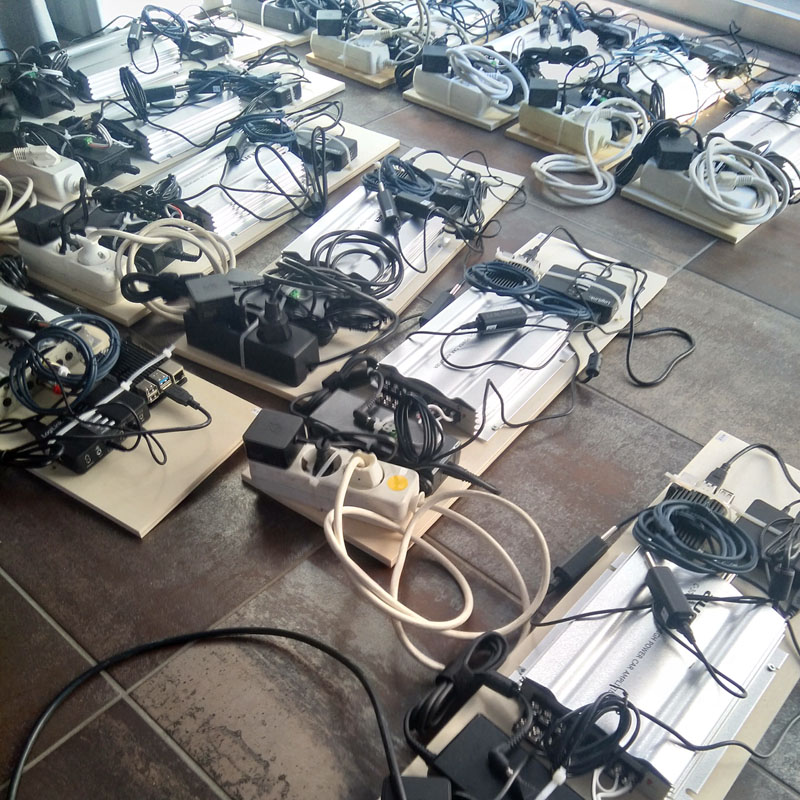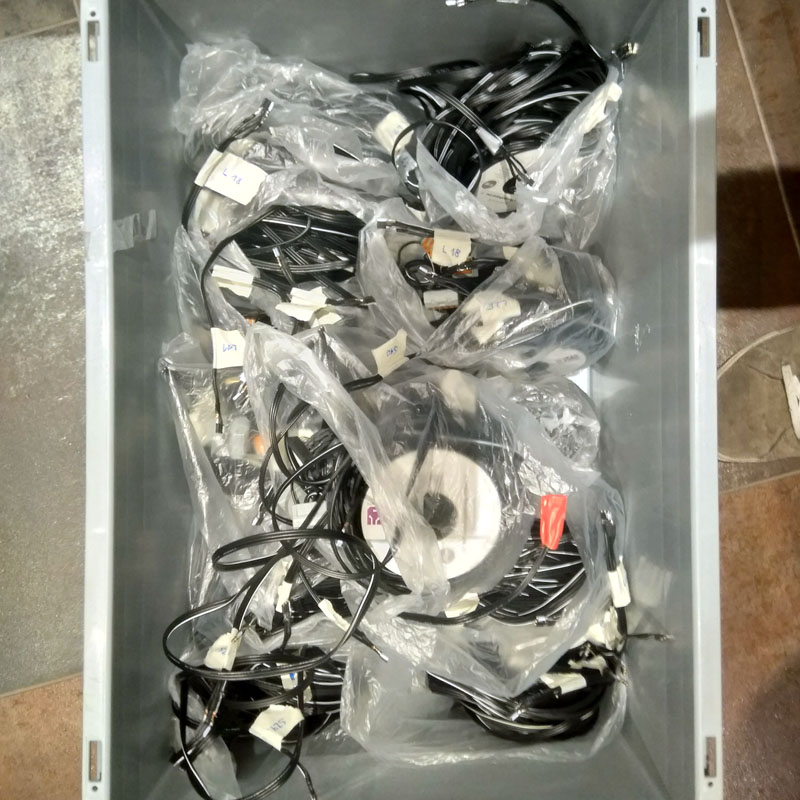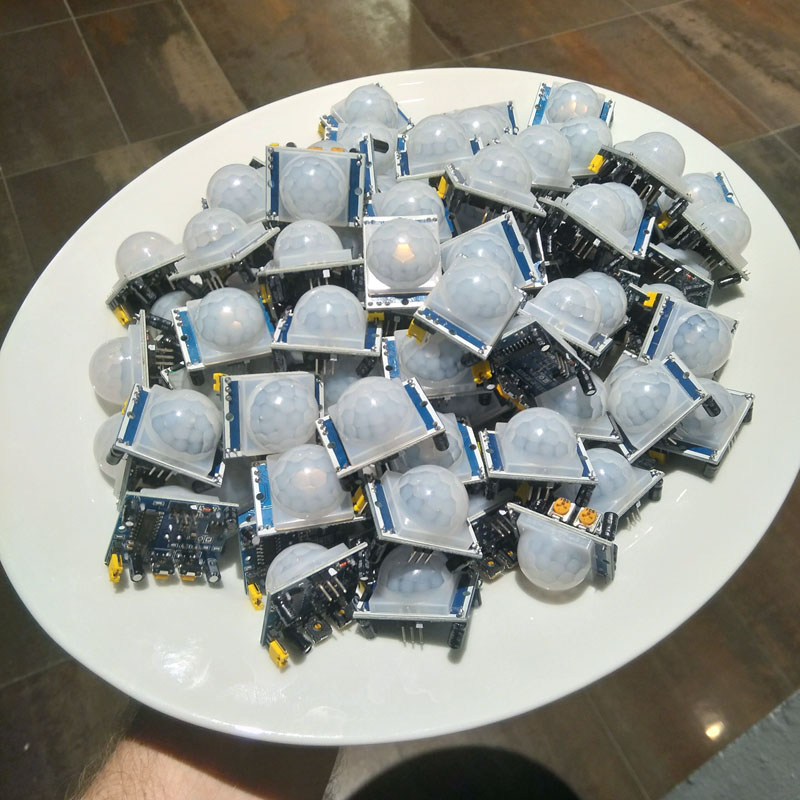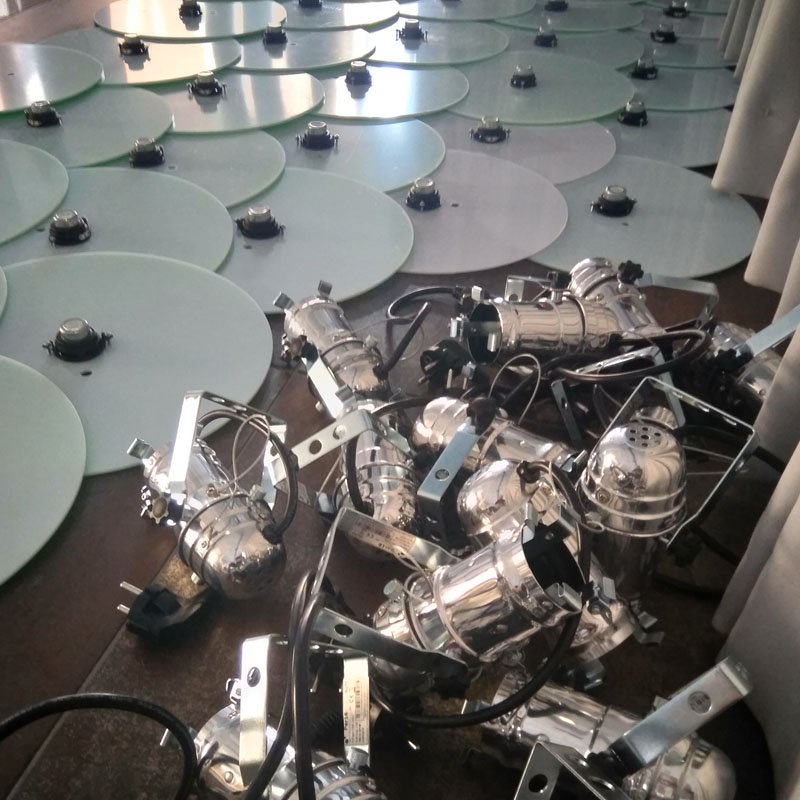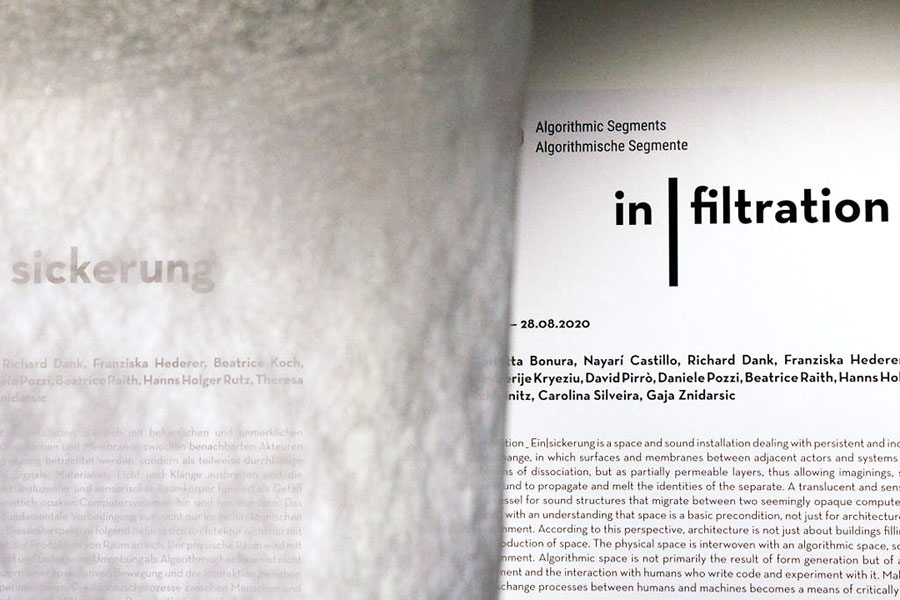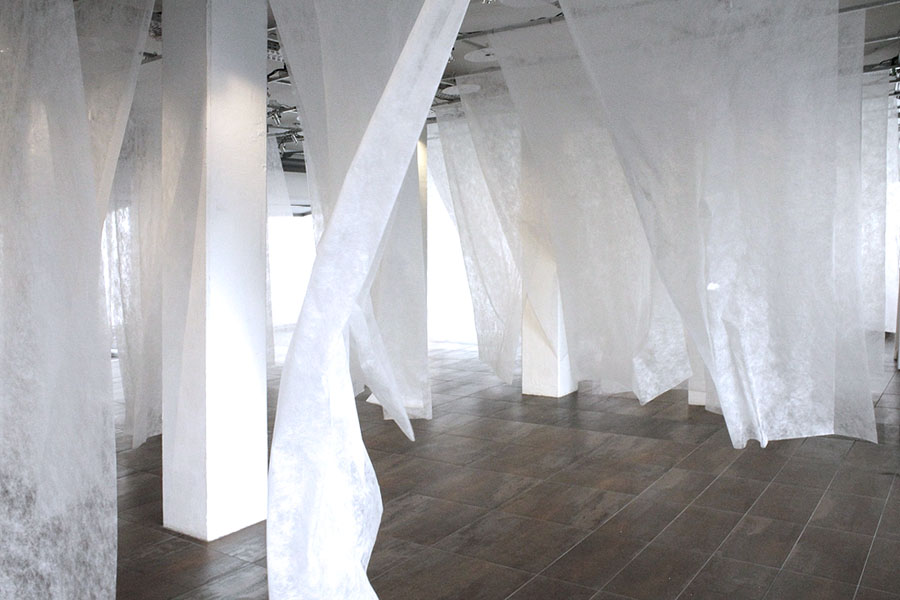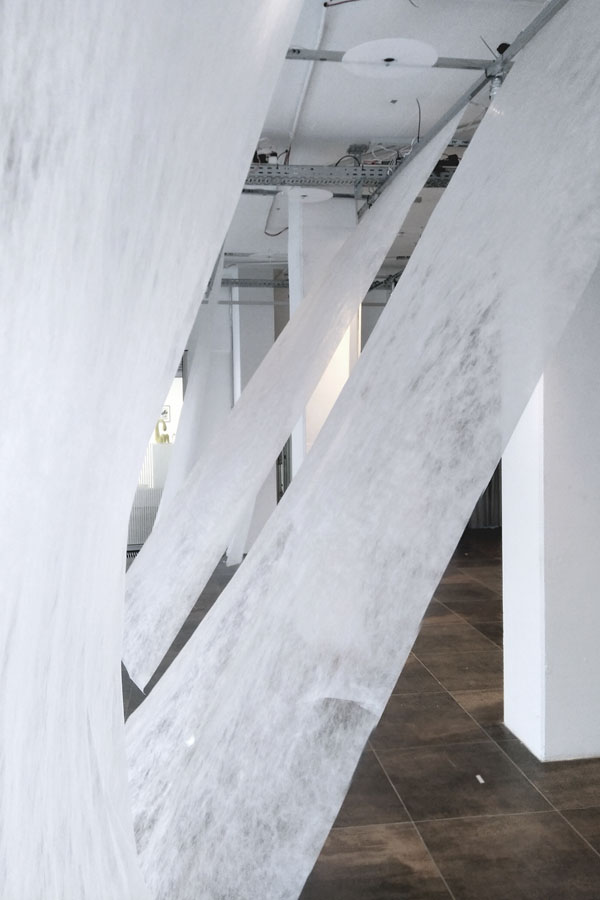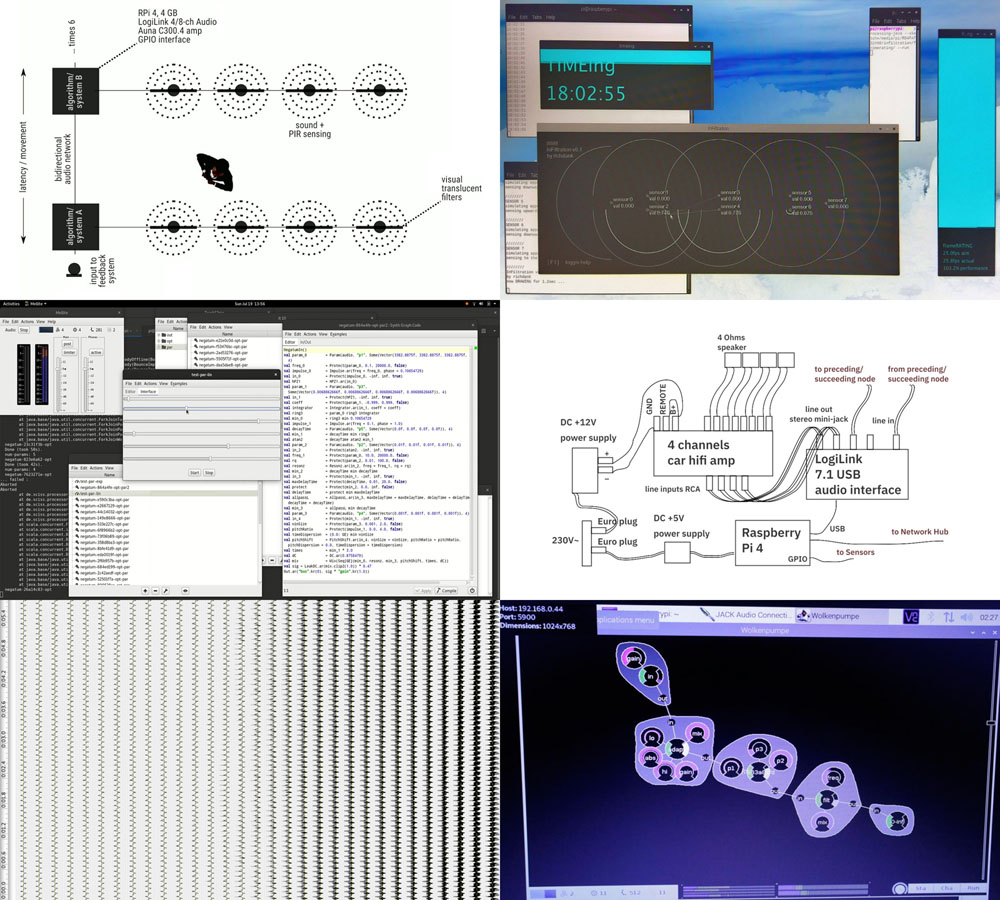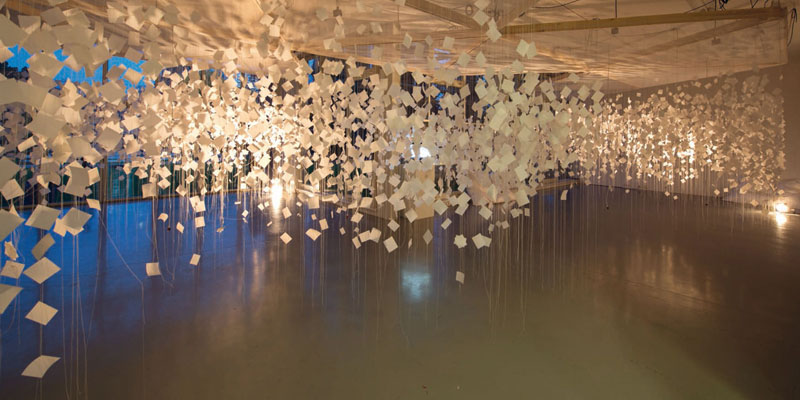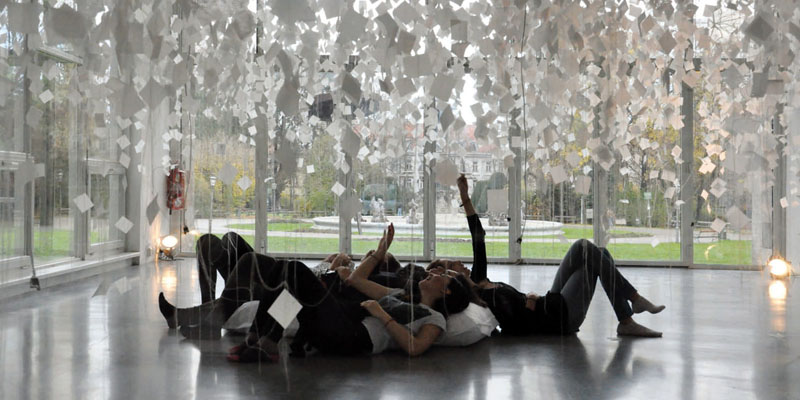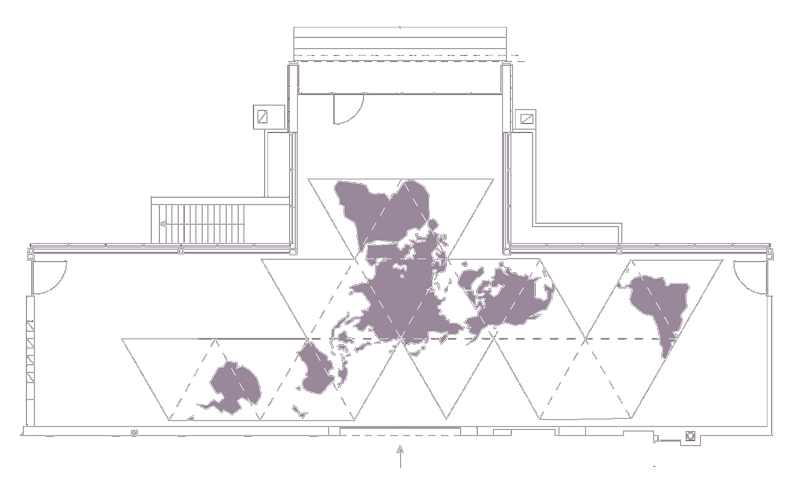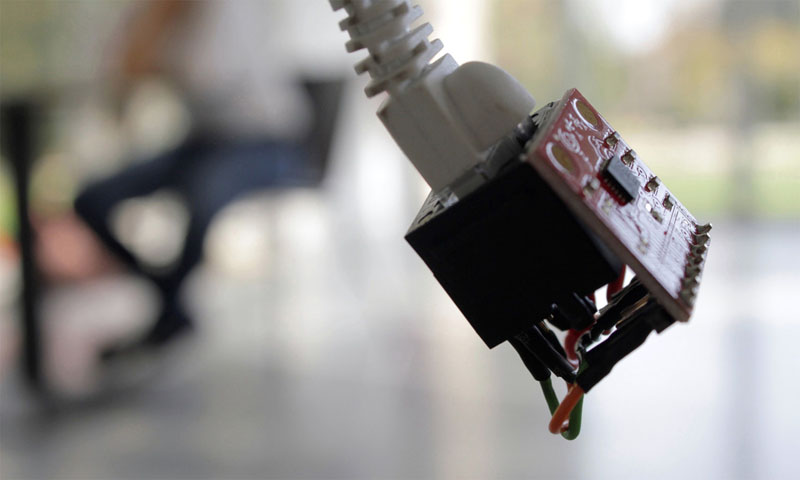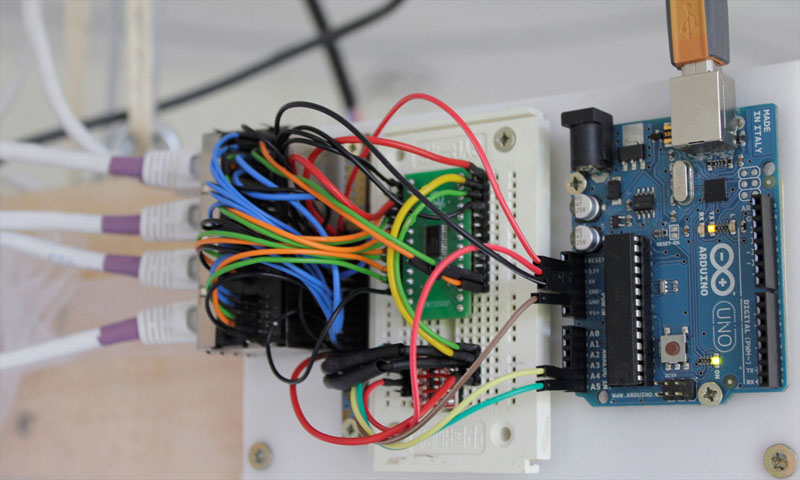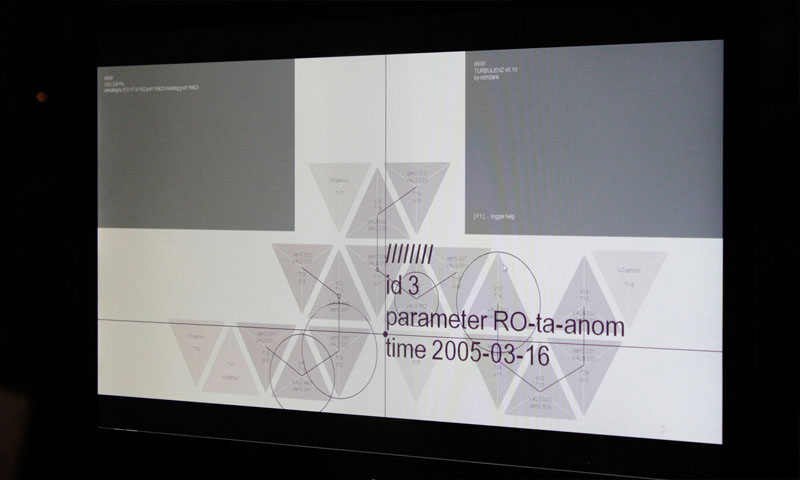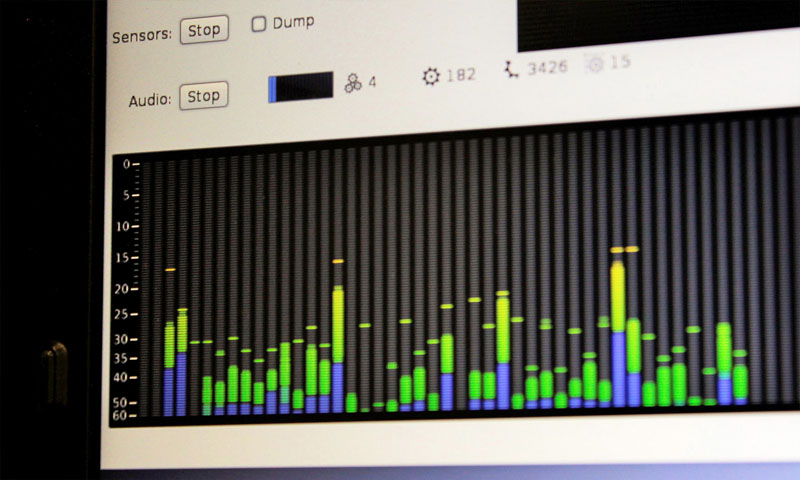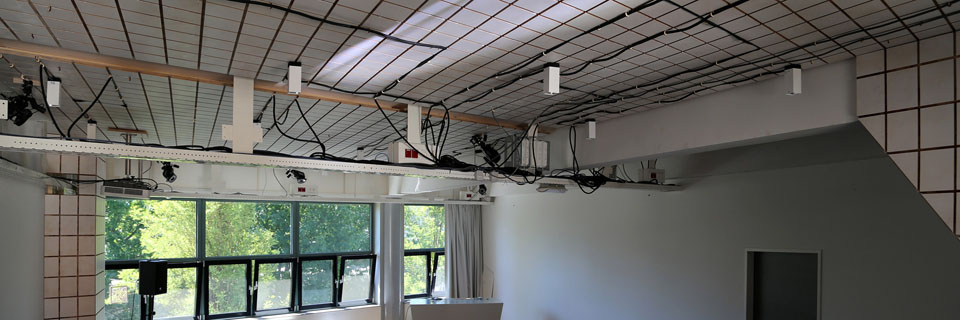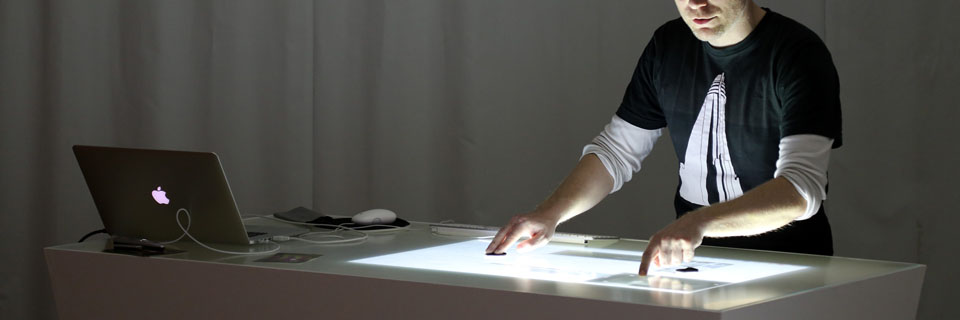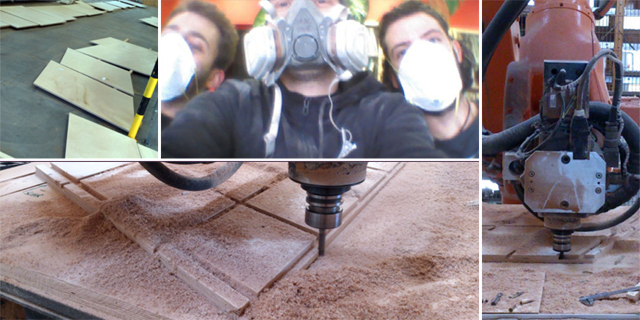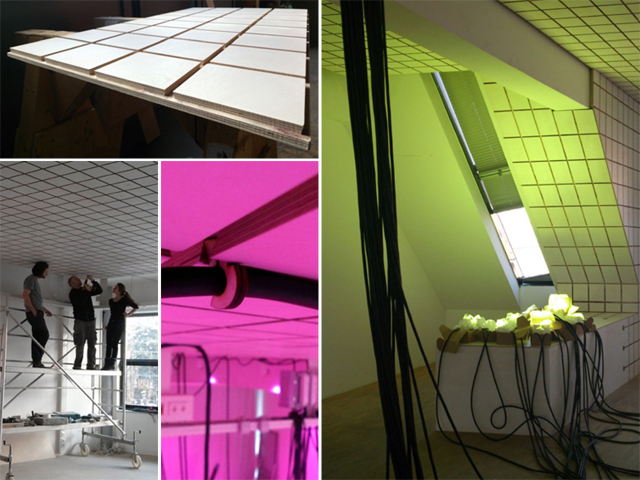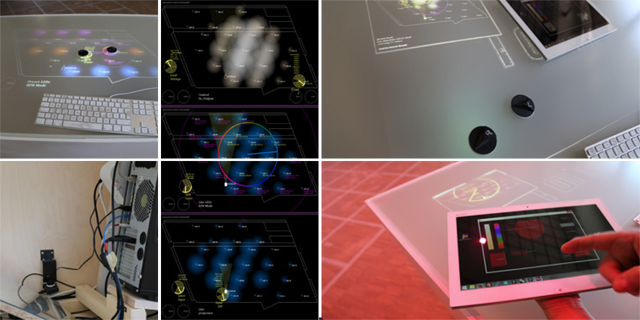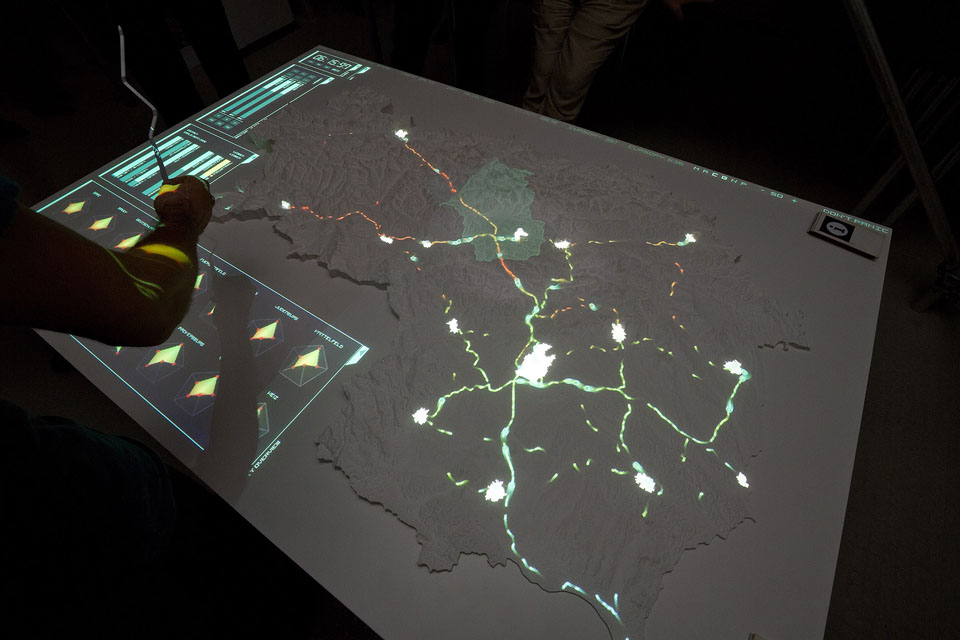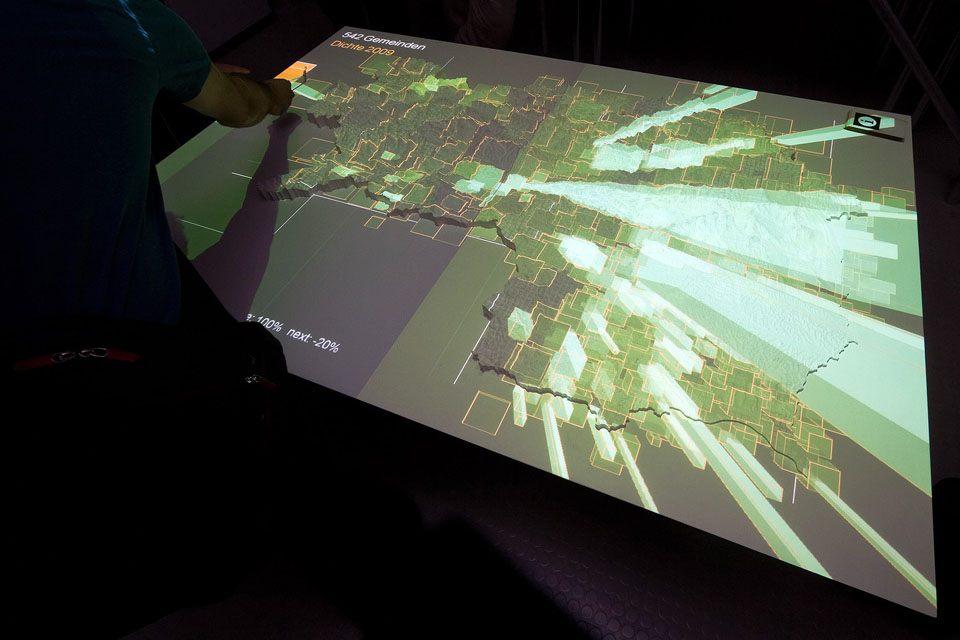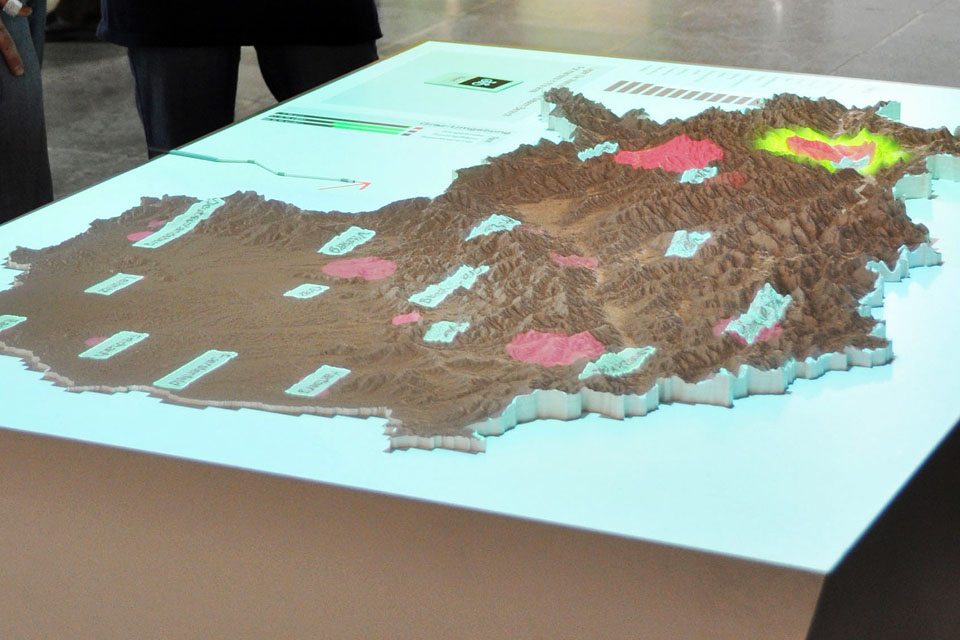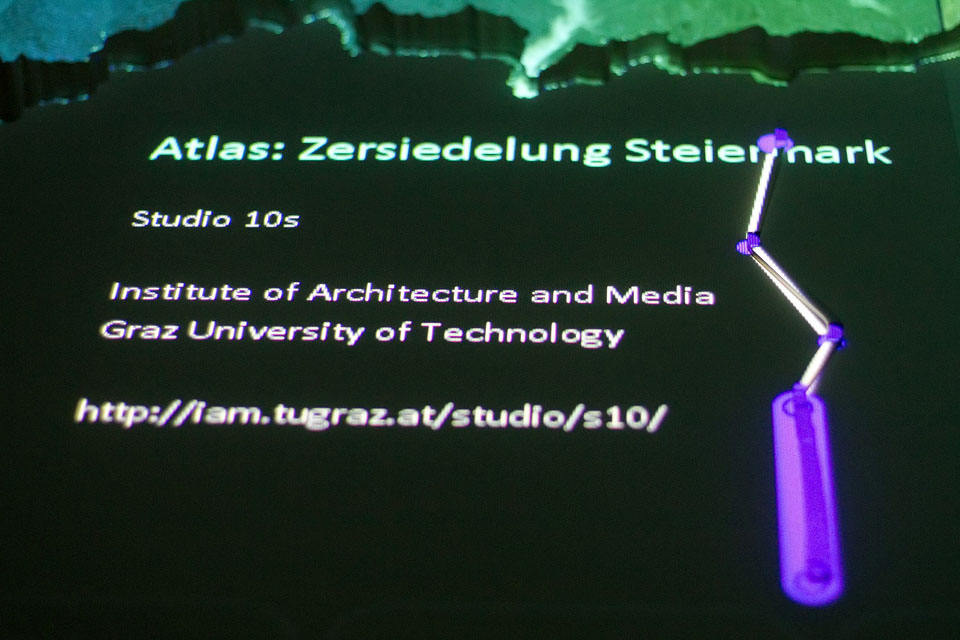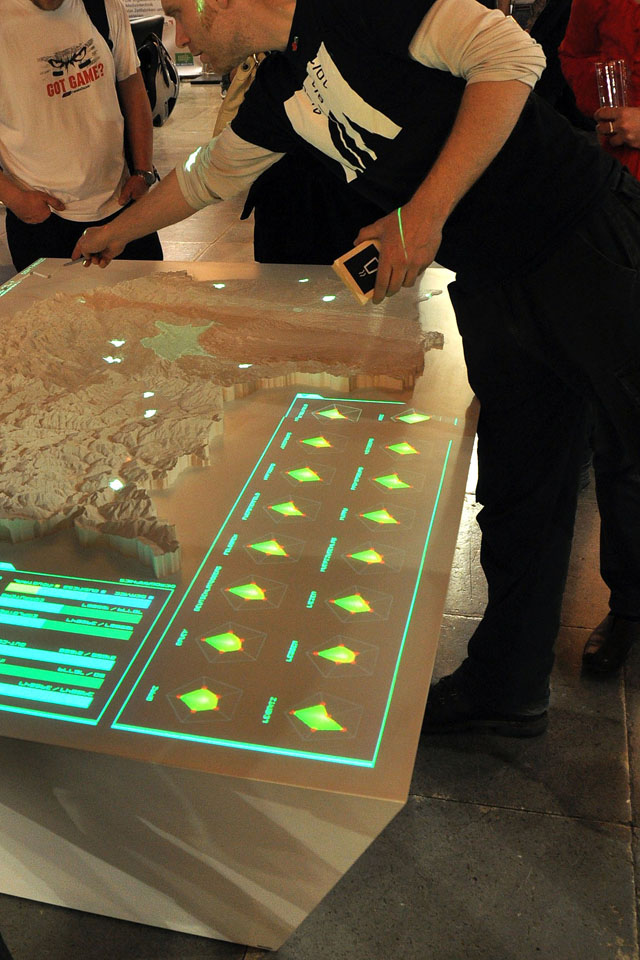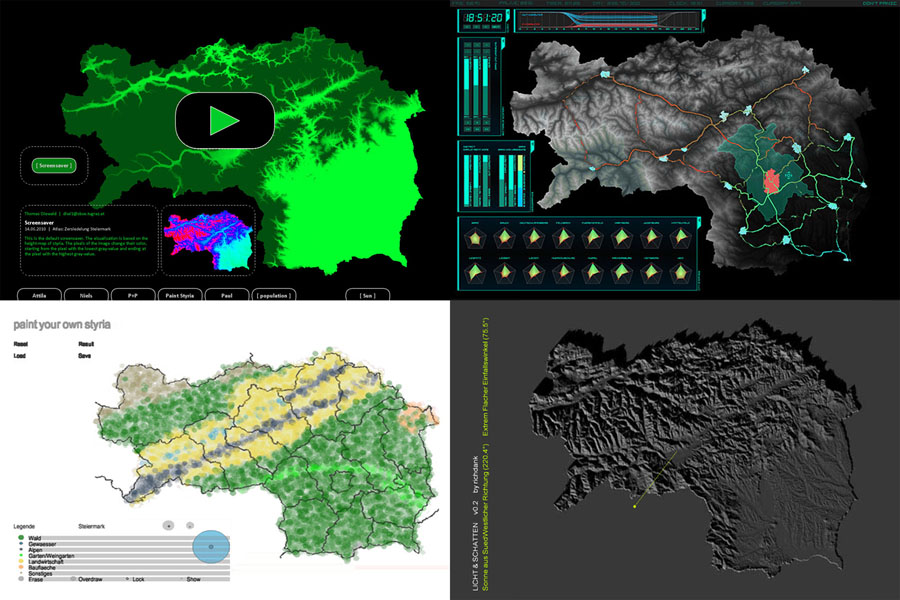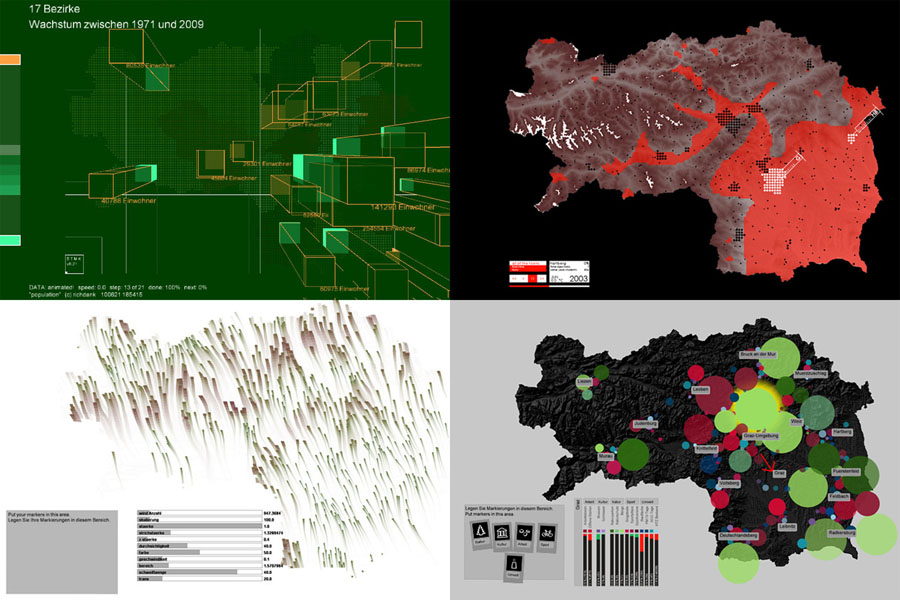Urban surfaces communicate with the inhabitants. Spaces become immersive environments. Exhibitions respond to their visitors. The user gets full control over the built environment via specially programmed devices. On- or offline. With proprietary software or open source.
Some paradigmatic interactive machinery shall be shown here in this brief overview. They were developed in different constellations. The links provided lead to further details and full credits. For a complete list of works, please refer to richdank - the complete story.
The computing units, wireing, a plate of PIRs, loudspeakers and lighting.
in|filtration
Persistent, inconspicuous processes
2020
The question of the relationship of viewer and art, of recipient and creator, of subject and object is, of course, a complicated one. And it is one that we do not want to approach lightly. But that issue becomes a lot more difficult in an exhibition that deliberately seeks to interact with the visitor.
The design for the exhibition in|filtration within the framework of Algorithmic Segments proposed that the guests of the gallery should move through different space-organizing levels. Superimposed on this partitioning of the media art lab ESC were sound constructs, which were also intended to interact.
The physical structuring would be made up of translucent fabrics, which, in addition to their interesting texture, also added kinetic features. Capturing the movement in the gallery space was the job for an array of 96 Passive Infrared Sensors. These PIRs had the advantage of being not only inexpensive, but also comparatively easy to connect to the twelve computing units (Raspberry Pi 4).
The specially developed Java application now allowed for the recording of what was taking place: equalization/normalization of the incoming values, simulations and graphical output for testing purposes, followed by the transfer of data to the sound components. Some kind of swarm intelligence came to life. In this vein, the modulated 48-channel sound was able to forcefully accentuate the already visually impressive installation.
Turbulence
Climate Sound Portrait
2014
How can complex information - as it is produced in climate research - find its equivalent through sounds in a microclimatic exhibition space? This project was developped in close collaboration within SysSon - a systematic procedure to develop sonifications.
So far, researchers have focused on simulating prognoses and creating visual representations. In the process the data space emerges out of a net that is stretched over the globe and is monitored during a very long period of time. Yet, this venture wants to make that heap of information sensible using another dimension: hearing. The results collected are translated into sounds, this means: the data becomes audible!
The task was to create a spatial atmosphere and a sensorial interface to 'display' the sounds and to interact with them. The immersive setting includes sensors that transform the impulses triggered by visitors via modulation of the data sets into new sound patterns. The final installation was presented in an interdisciplinary exhibition in the Forum Stadtpark, aiming to make this particular research tangible for a broader audience.
Above: The Augmented Architecture Laboratory on Campus Inffeldgasse at Graz University of Technology and the mobile desk as central control unit.
Below: Different light- and projectionexperiments during the reopening in 2014.
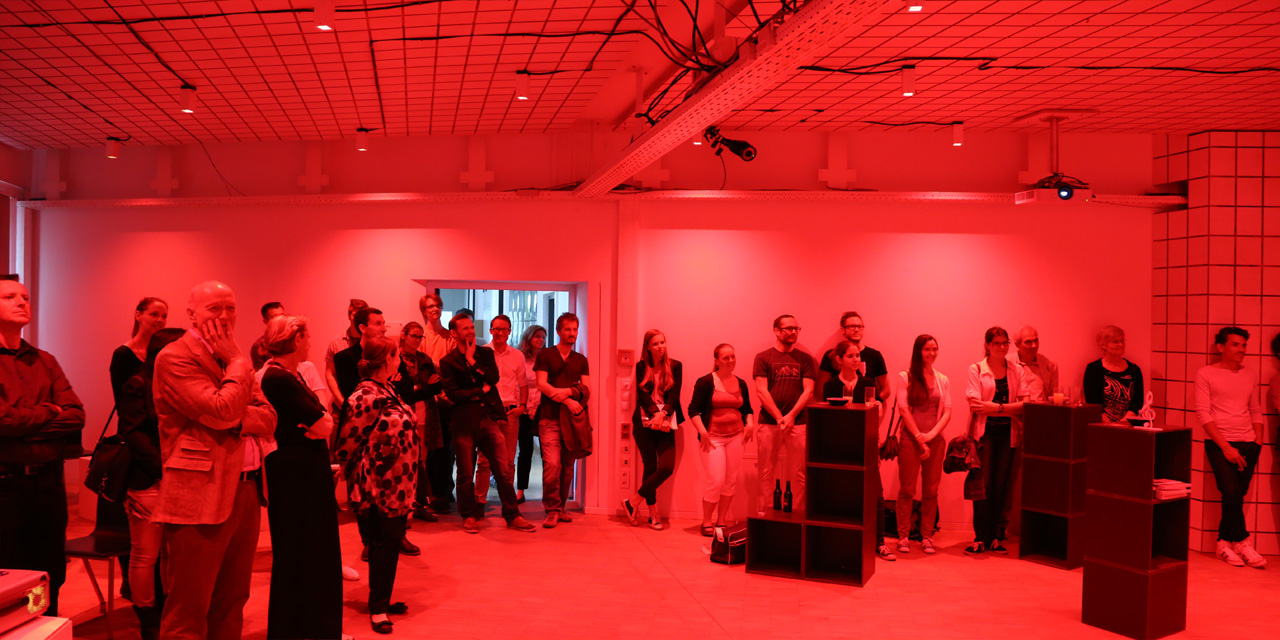
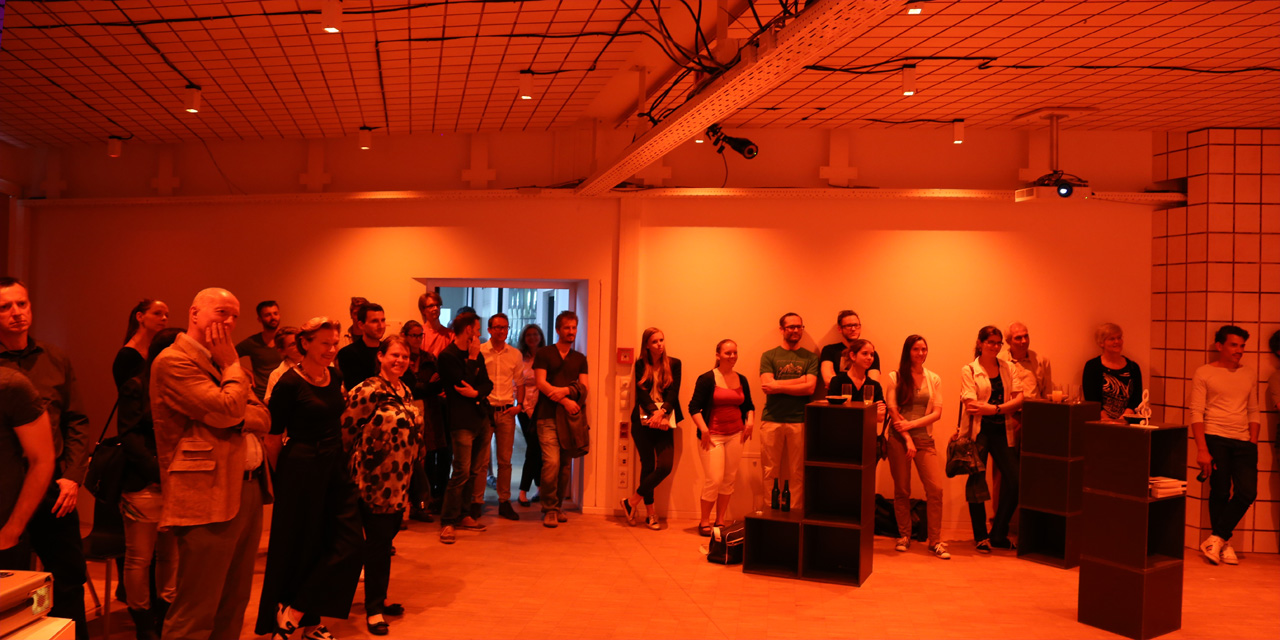
AuArLa
Augmented Architecture Laboratory
2013/14
Since the founding of the Institute of Architecture and Media at a new, third campus of Graz University of Technology, it has been running an experimental seminar space, where the impact of new media technologies on architectural production is explored. But as the theoretical foundations and the technological developments are continually advancing, it was necessary to adapt ...
The new Augmented Architecture Laboratory can fulfill a wide range of standard prerequisites like lectures and exhibitions - while at the same time being adaptable enough to continue to allow for manifold experiments. Diverse light and projection technologies have been implemented, along with tracking systems, immersive environments and other ways of digitally expanding space.
And all those installations are now controllable via an interactive table with an interface that accordingly needed to be engaging.
An compelling, flexible and easy-to-use design was developed and implemented: make all the technology visible - staging instead of concealing it! Once again cooperation partners from the industry were found: KITEO/LUMITECH, with expertise in the field of LED technology and the Engineering Center Wood/Holzinnovationszentrum, where the individual components were prefabricated.
The AuArLa reopened during the festival celebrating the 10th anniversary of the institute.
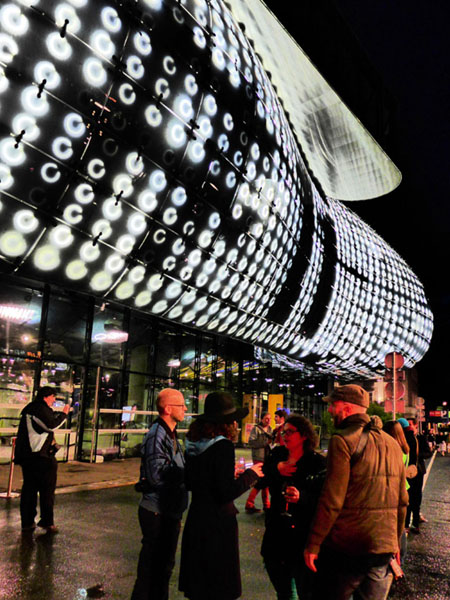
Above: The Opening with the first crowd gathering and interacting.
Below: Two impressions from around the Kunsthaus Graz.
Following two rows: Photographs taken at the Uhrturm on the Castle Hill.
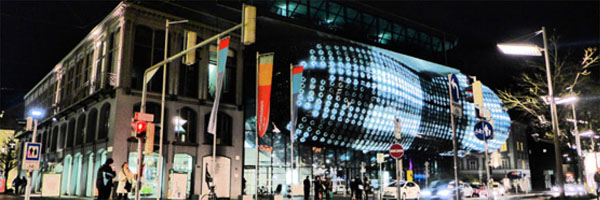
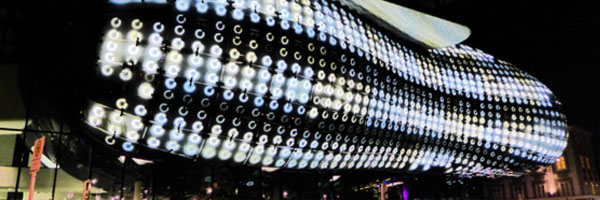
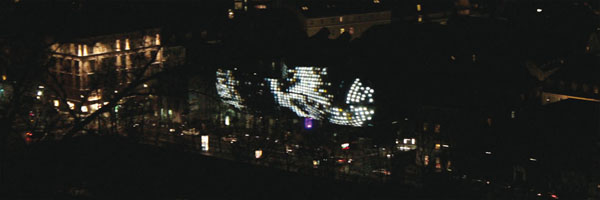
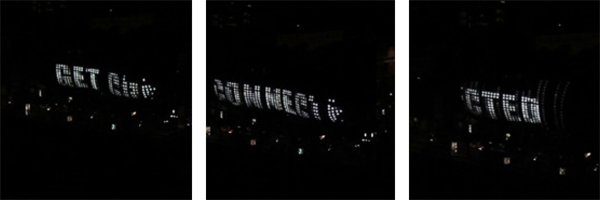
Bottommost line: One of the misused urban devices to trigger the BIX-façade's moving images.
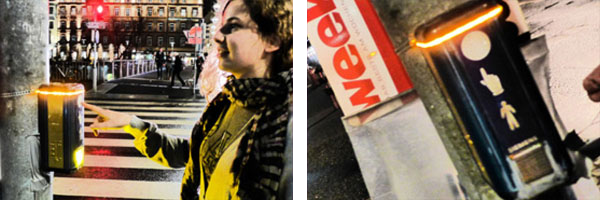
BIX.perform();
Responsive art in the public realm
2013
Commenting on different communication strategies between the public, the city and the Kunsthaus Graz, a group of students of the international master program Advancing Digital and Regional Interactions in Art Teaching (ADRIART) presented their findings/experiments on participation. Research was done about creative strategies on transmedia art projects that work with and in the public realm in its broadest sense. Finally four interactive performance pieces enriched the city's surface by interweaving the sensorial and spatial relations within the urban texture.
BIX is a matrix of 930 fluorescent lamps integrated into the eastern face of the Kunsthaus. The concept was initiated and developed in 2003 by realities:united for the architectural competition entry of Peter Cook and Colin Fournier.
In 2013 - besides conducting the works - we created a new Java-based application, being able to establish a live connection from any device worldwide to the façade's MAX/MSP-based controller.
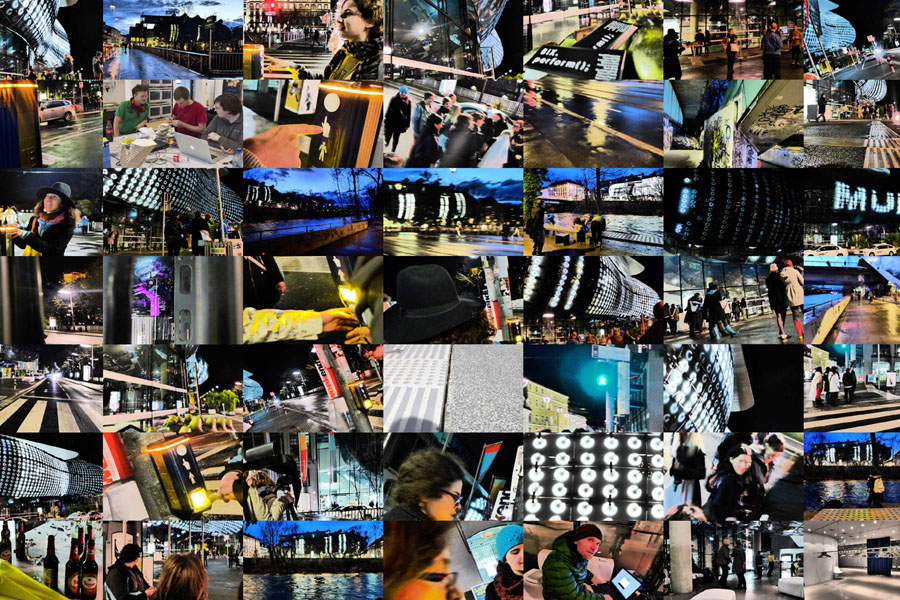
Augmented Styria Desk
Atlas: urban sprawl
2010
Urban Sprawling is a well-known phenomenon throughout the industrialized world. For decades now these facts - with a manifold of associated problems - are uncontradicted. But for the greater part, regional development and urban planning are still heading into the wrong direction. However it is one thing to analyze all this on an academic level, and something completely different to make that clear to the rest of us.
How could that be done then? Issue an atlas full of algorithmic interpretation, extrapolation and design parameters. And put those findings across to the expert and the ordinary citizen for discussion - way beyond any usual geographic information systems ...
Based on analytic maps, statistic tables and detailed research into 30 topics around the vast field of urban sprawl in Styria/Austria a database with over a million entries was distilled. This substantial survey of the spatial planning status quo then evolved into the Augmented Styria Desk with eight high-end applications. (See it in action in an introductory clip.)
With two data projectors animated visualizations are superimposed onto a milled, topographic model. As input devices we introduced on the one hand a 3D infrared tracking system to detect motion. On the other, there is a video camera to register patterns and icons. Thus interaction via hands, objects and cards is made possible.
